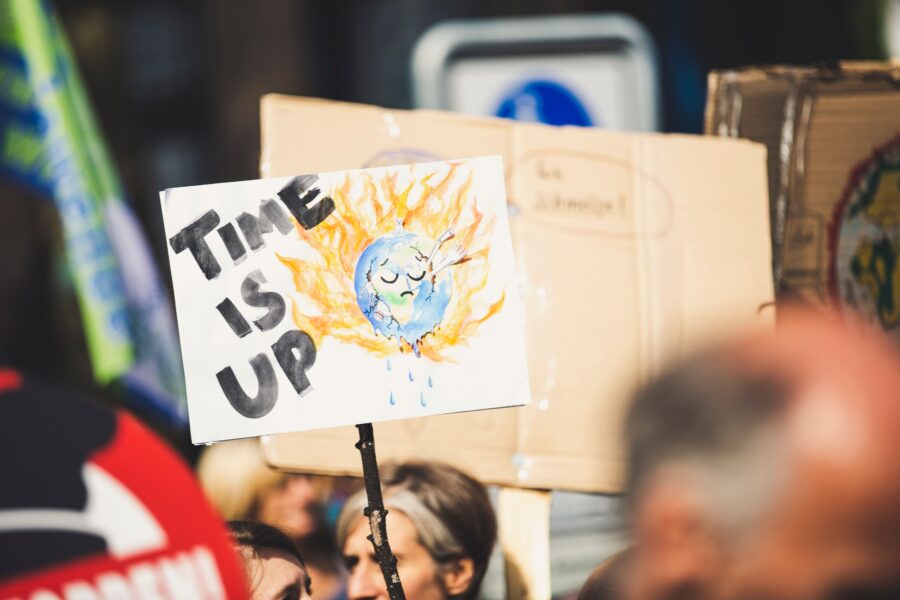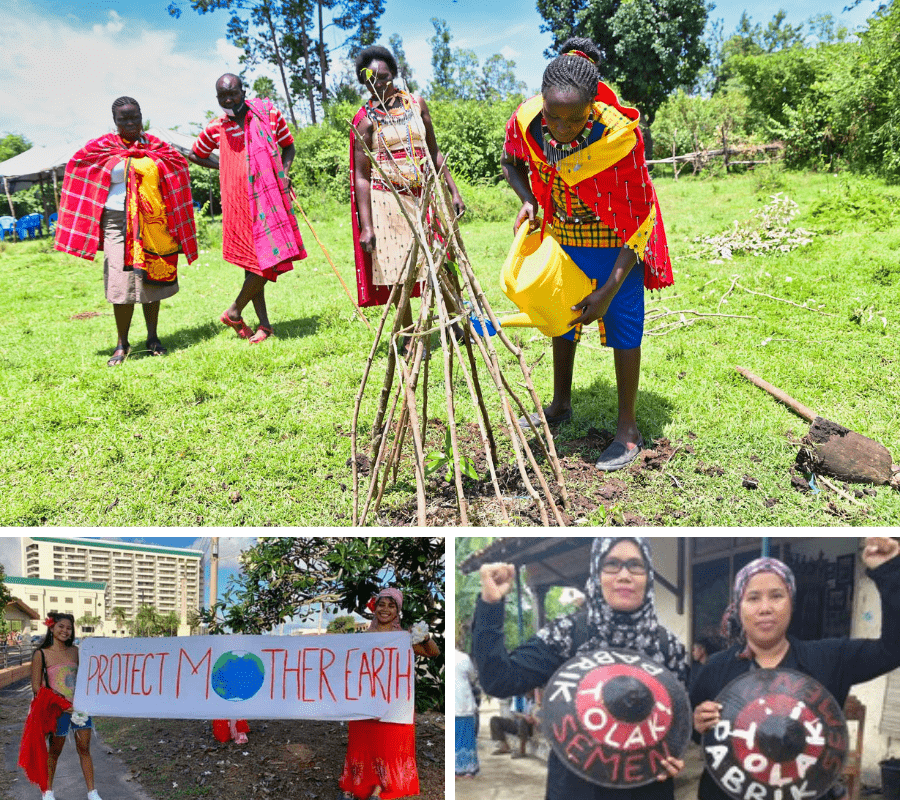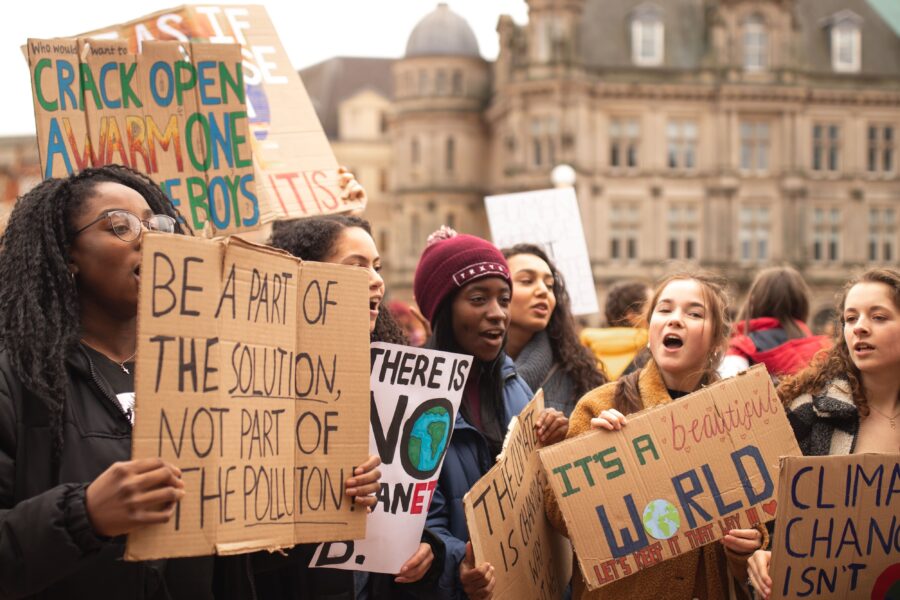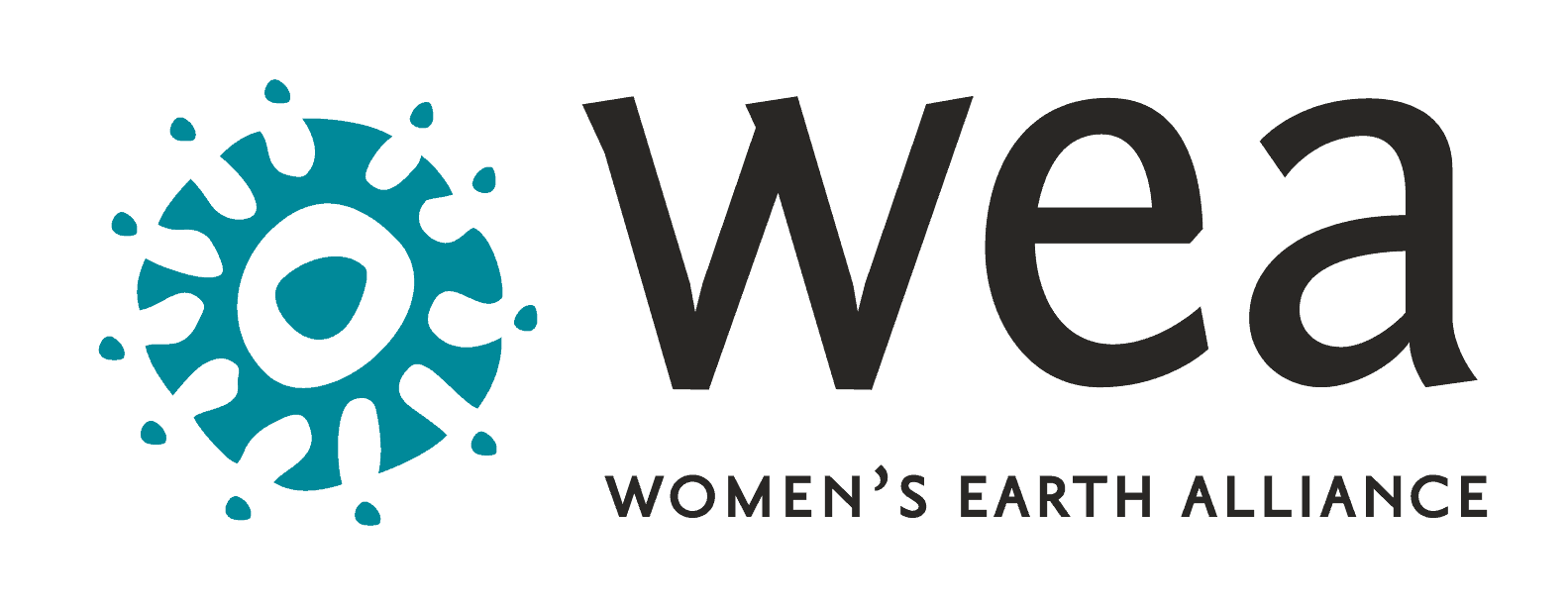Resilience and Action: an antidote for ‘Climate Doomism’

Fifty-six percent.
That’s the staggering number of respondents in a survey of 10,000 people aged 16-25 and spanning 10 countries who feel that “humanity is doomed.” And while this perspective is distressing, there are many people wondering: is it entirely unfounded?
You’ve likely heard about—and perhaps also read—the latest climate reports which explain in no uncertain terms that the pervasive impacts of climate change are being felt around the world—and the risks to both people and planet are only increasing.
This report came on the heels of the most extreme heatwave in modern history which led to devastating wildfires across the northwest and western United States; Hurricane Ida, which was the fifth-costliest weather disaster in history; record-breaking flooding in Europe and China; a devastating cold wave and winter storm in Texas and surrounding states, killing 246 people; and the warmest month in recorded history (July). And that was just in 2021.
Now, there’s the war in Ukraine, which has prompted a push for increased production of fossil fuels, leading some scientists to call it a fossil fuel war.
It’s no wonder psychologists report that eco-anxiety is on the rise. Eco-anxiety is defined by the American Psychological Association as ‘a chronic fear of environmental doom’, and is when the state of the environment directly affects our mental health. Similar and related terms include climate change distress and ecological grief and each can be real and debilitating emotions, varying from mild to more acute in the way they present—concern over bringing children into an environmentally overstressed world; agonizing over consumer choices that, after constant weighing of all the environmental impacts, still come up short; having difficulty feeling the simple joys in life because of an ever-looming climate crisis.
Luckily, there is increased attention being paid to supporting those experiencing eco-anxiety, particularly young people, including this resource and this one.
But what happens when anxiety shifts to paralysis? What happens when we move from constructive doubt to fatalistic doubt?
This perspective is what’s become known as climate doomism, or the idea that it’s too late for humanity to turn things around. Where eco-anxiety—with the proper support, acknowledgement and healing of grief—can be a motivating factor that urges us to take meaningful action for the earth, too much of it can have the opposite effect, leading to panic, paralysis and resignation.
What’s more, “staying stuck in climate doom only helps preserve a status quo reliant on consumerism and fossil fuels,” making it a self-fulfilling prophecy. Too often, the idea that “it’s too late” to make a difference also serves as a way to excuse ourselves and those most at fault for the climate crisis—things are so terrible → but there’s nothing we can do to change it → so things keep going, “business as usual”. Rinse and repeat.
But for many women—particularly BIPOC women and those in the Global South—who are already on the frontlines of climate change and environmental devastation, sitting in the “it’s too late” paralysis of climate doomism is a privilege they can’t afford. Theirs are the communities hit hardest by the compounding effects of climate change, environmental violence, racism, and systemic economic disenfranchisement. As the New York Times recently highlighted:
- “Warming seas and rivers are threatening ecosystems that are a lifeblood ritual of tribal economies and cultures.”
- “Some of the worst physical effects of climate change are disproportionately felt by Black and Latino communities and Indigenous nations—who often live in places with a legacy of mining, energy drilling and other pollution. And while these groups are among the most concerned about the changing climate, community resources to deal with the emotional fallout may be more limited.”
- “Our ancestral spirits live in land, sea and sky creatures that are now endangered or extinct. We also face the loss of our entire existence as an Indigenous community.”
For women, who are often responsible for caring for families and stewarding natural resources, resilience in the face of eco-anxiety and climate doomism is, and has been, a matter of survival.

The unwavering resilience of women
In 2001, Melinda Kramer (Co-Founder/Co-Director of what would in 2006 become Women’s Earth Alliance) was at the University of Nairobi and was able to attend a guest lecture by Dr. Wangari Maathai. Dr. Maathai was speaking about her campaign to mobilize Kenyan women to plant trees, which would eventually lead to the planting of more than 51 million trees in Africa, and engaging nearly 900,000 women with economic opportunities in the process. She launched this campaign—what we now know of as the Green Belt Movement—in response to the needs of rural Kenyan women who reported that their streams were drying up, their food supply was less secure, and they had to travel further and further to gather necessary resources for their families.
After the speech, Melinda had a chance to meet Dr. Maathai and thanked her for her leadership. At the end of the conversation, Dr. Maathai said, her smile radiant and eyes resolved: “What we need to do is simple. Just plant seeds. Seeds of all kinds. You will be amazed at how they grow.”
This same resolve and confidence in the power of our collective action to transform our future is reflected in WEA Women around the world.
For WEA Leader Moñeka De Oro (Chamorro), who comes from the Northern Marianas Islands and works with the Micronesia Climate Change Alliance, inaction isn’t an option. Across the Pacific, sea levels are rising at faster rates than expected. Island nations like the Republic of the Marshall Islands (RMI) are considering relocating their citizens or building an elevated island because they’re expected to be underwater by 2030. This urgency is what drives Moñeka’s advocacy for the people of the Northern Marianas, Guam, the Federated States of Micronesia, Palau, and the Marshall Islands. She’s supporting efforts and campaigns to ensure food sovereignty, self-determination, demilitarization and accountability, and youth climate literacy to ensure the next generation is equipped with the tools to be resilient.
WEA Leader Raihal Fajri from Aceh, Indonesia is no stranger to crisis and has seen firsthand the change that’s possible, even when the odds seemed stacked against us. Raihal sprung into action in 2004 after a tsunami devastated her region, leading to a drastic deterioration in the quality of her community's water source that was located next to a concrete mine. For months, she tirelessly pushed at the government, the concrete mine leadership, and the media until her campaign succeeded in closing the mine and protecting her community from further harm. Then, when COVID-19 hit, the NGO she leads pivoted their environmental and health programming to respond. Her team immediately launched a food distribution program that provided for community members who were cut off from food and supplies. Because they know the customs, social dynamics, and unique challenges of their home village, their aid was exactly what people needed, and not a dollar was wasted.
And WEA Leader Noormishuki Chesingei, who is a member of the Maasai community in Kenya, has turned the dual crises of climate change and COVID-19 into an opportunity to build community resilience and enact powerful change. Noormishuki has seen climate change and the pandemic exacerbate the burden placed on women by existing inequitable systems and norms, particularly around accessing food, fuel, or safe water (a responsibility held primarily by women). In response, she launched a tree-growing eco-enterprise and nursery to address issues of erosion, flooding, rising temperatures, and food insecurity. She and her team have trained, recruited and mobilized women and community members to plant thousands of trees in their farms and schools, and make the shift over to climate smart agriculture. As Noormishuki said, “We cannot rely on the government because...government interventions take ages to reach the ground; the solution is with us and within us.”
Each of these leaders saw a seemingly insurmountable challenge—the threat climate change poses to island nations, the devastation of extractive industries and a global pandemic, the need for community-based solutions and resilience—and were faced with a choice: action or inaction. Agency or resignation. Hope or despair. They chose to plant seeds, and to steward those seeds into growth: launching advocacy campaigns, fighting for clean water, and saving their community’s forests.
In a sense, we are all faced with the same choice. And we can draw from these inspiring examples to create a blueprint for a future that will see us through eco-anxiety, climate doomism and the existential crises of climate change as a whole.

You are part of a groundswell of climate action
In a recent article, Sarah Jaquette Ray, the chair of environmental studies at California State Polytechnic University, Humboldt, and the author of A Field Guide to Climate Anxiety said, “To fight the sense of powerlessness…[people must] see themselves as part of a collective groundswell of environmental groups working around the world…. If the problem is so big and we’re so small, which is what the doom narrative is telling us, then we need to make the problem smaller and us bigger.”
A question we get asked a lot here at WEA is “...but what can I do? How can I help?” To this, we often ask back, “What is the fire that’s inside you that says something can be done differently? What are you passionate about? What are your gifts?” As WEA Leaders like Noormishuki show us everyday, we don’t need to wait for governments or “experts” in order to begin taking action—we have the power within us, and within our communities. And while systemic action will more immediately move the needle on the global forces at play, local actions are just as important and both can happen at the same time. Taking both systemic and personal action, no matter the size, can have a profound impact on those around us, on the earth, on future generations, and in building confidence in our own resilience.
Here are a few simple things you can do TODAY to make a difference for communities and the earth:
- Get involved in your community decision-making! Run for office or a city council position, and make climate resiliency a key part of your platform/agenda/legacy.
- Get involved in local, intersectional movements. Actions like the historic Indigenous women-led Standing Rock movement was both a call for Indigenous rights as well as the protection of water—and there are many women-led movements like it in communities around the world (maybe even in your hometown). Find out what’s happening in your region. Show up and support frontline communities and women leaders. Move the needle toward justice.
- Say no to single use plastics. Bring a reusable bag to the shops, and be intentional when purchasing products in plastic packaging. Instead, invest in reusable water bottles (disposable water bottle waste washes into the ocean and kills 1.1 million marine creatures each year) and visit your local re-fill store for refillable household products.
- Be wise and mindful with your water use, particularly if you are living in a water-stressed area.
- What products are you using? Be intentional about how you clean and the products you use in your home and yard. Not only are harmful chemicals bad for the environment, but they can also negatively impact your family's health. If you’re upgrading your stove soon, consider a stove that’s healthy for your home and the earth.
- Buy slow. Learning where your clothing is from—both in terms of materials and labor conditions—can have a big impact. Fast fashion production comprises 10% of total global carbon emissions, as much as the European Union. Furthermore, 85% of all textiles end up landfills each year. Some earth-friendly alternatives: repurpose and mend your clothing; organize a clothing swap with friends; and if you must buy, opt for secondhand (shopping secondhand is also a great option when buying household goods—check out local estate sales and vintage shops.)
- When accessible, buy as local as possible. Visit the closest farmers market to get to know local farmers, learn what grows in your region and how long those foods are in season. And while at the farmers market, buy extra produce to reduce your overall meat consumption! Overall, support women in organic, regenerative agriculture: Globally, women in agriculture are often unpaid or underpaid and receive less credit, land, agricultural education, information, and resources compared to men. If there are women-led Community Supported Agriculture (CSA) programs, farms/farmstands, or booths at your local farmers market, support their work and get some healthy, fresh produce out of it!
- Invest in girls’ education in your local schools: This ensures that the next generation has STEM and ecologically oriented skills required to transition to a green economy.
- If you have an environmental or climate initiative or solution you’ve been championing in your community (i.e. going plastic free, establishing community gardens, nonviolent direct action against polluters, advocating for specific policy change, etc.), deepen and expand your reach! Programs like Women's Earth Alliance's U.S. Grassroots Accelerator supports women leaders to scale and amplify the impact of their urgently needed solutions.
Whatever action you choose to take, take it. Because while we can often feel that the climate crisis is out of our control, we are never actually without agency.
And then be proud of the changes you’ve brought to life in the world, the people you’ve inspired, and the lives you’ve impacted. Celebrating our successes on the path to creating a thriving future will not make us complacent—it will reinforce the power we each have to make a difference.
And it’s good for our mental health.

One day, the climate crisis and gender inequity will be a thing of the past. Our monthly giving community, the Seed Bank, is how we can all say we were a part of the solution. Just $50 helps 300 people access women-led climate solutions like regenerative agriculture, forest protection and clean energy.

[…] Facing reality and grieving what is irreparably lost is important work. At the same time, it is vital to remain hopeful. Despair is a greenhouse gas of the mind. If we only focus on what’s wrong, we have no energy left to fight to make it right. […]